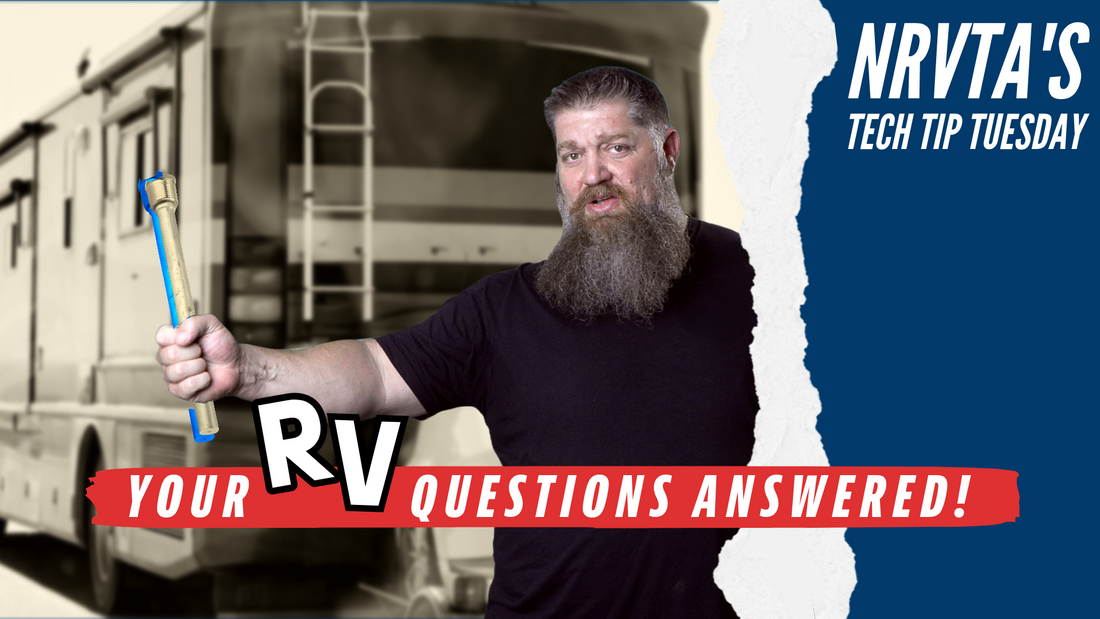Welcome back to another Two-Minute Tech Tip Tuesday, brought to you by the National RV Training Academy (NRVTA)—the largest hands-on RV training facility in America!
This week, we’re coming to you straight from the classroom floor at the NRVTA to answer real questions from our viewers. As always, don’t forget to hit that subscribe button so you never miss another tip to keep you rolling down the road with confidence.
Question 1: “Should I Replace the Anode Rod or Just Use a Drain Plug?”
This one comes from Rodney Alagar, who recently purchased a used RV. He discovered the previous owner had removed the anode rod from the Suburban water heater and replaced it with a simple drain plug. His question:
“Should I reverse the work and reinstall the anode rod? I also saw combo units that act as both anode rod and drain plug—are they a good option?”
✅ The Answer:
Yes—you absolutely should reinstall the anode rod. Here’s why:
- The anode rod is a sacrificial component that protects your water heater’s tank from corrosion.
- It attracts minerals and corrosive elements in the water, preventing them from attacking the tank itself.
- Removing the rod leaves your tank exposed to mineral buildup and internal damage.
- Over time, this shortens the lifespan of your water heater and increases the risk of leaks or failure.
What to Do if It’s Missing:
1. Clean the tank first. If your heater has been running without an anode rod, there’s likely heavy mineral buildup.
2. Fill it with white vinegar, let it sit for 24 hours, then drain and flush. Expect a lot of white, chalky residue.
3. Once clean, install a new anode rod compatible with your Suburban model.
As for the combo drain/anode devices? Todd says he’s not familiar with any proven solutions, so proceed with caution and do your homework before installing one.
Question 2: “Can I Use a Bus Bar to Run Two Batteries in Parallel?”
Next up is Chris McGee, who recently installed two 320 amp-hour batteries in his RV. He asks:
“Can I use a bus bar to run them in parallel and get 640 amp-hours? Or will that act like a series connection?”
✅ The Answer:
Yes, you can use a bus bar to parallel your batteries—and no, it won’t act like a series setup if you wire it properly.
Here’s How:
- Parallel wiring increases your capacity (amp-hours) while keeping the voltage the same.
- Connect positive to positive and negative to negative.
- Use a positive bus bar and a negative bus bar:
-
-
Run both positive battery terminals to the positive bus bar.
-
Run both negative terminals to the negative bus bar.
-
Then connect your RV’s power load to each bar.
-
Bus bars are ideal for organizing parallel battery systems, and they make future upgrades easier too.
💡 Final Thoughts:
From water heaters to battery banks, understanding how your RV systems work can save you money, time, and stress. Whether it’s replacing a missing anode rod or expanding your battery capacity, getting the right info makes all the difference.
Have a question of your own? Drop it in the comments or message us directly—we just might feature it in a future episode of Tech Tip Tuesday!
And if you're ready to take your RV knowledge to the next level—whether you’re a DIYer or aspiring technician—visit NRVTA.com and see what hands-on training can do for you.
Until next time, stay safe—and happy travels!

